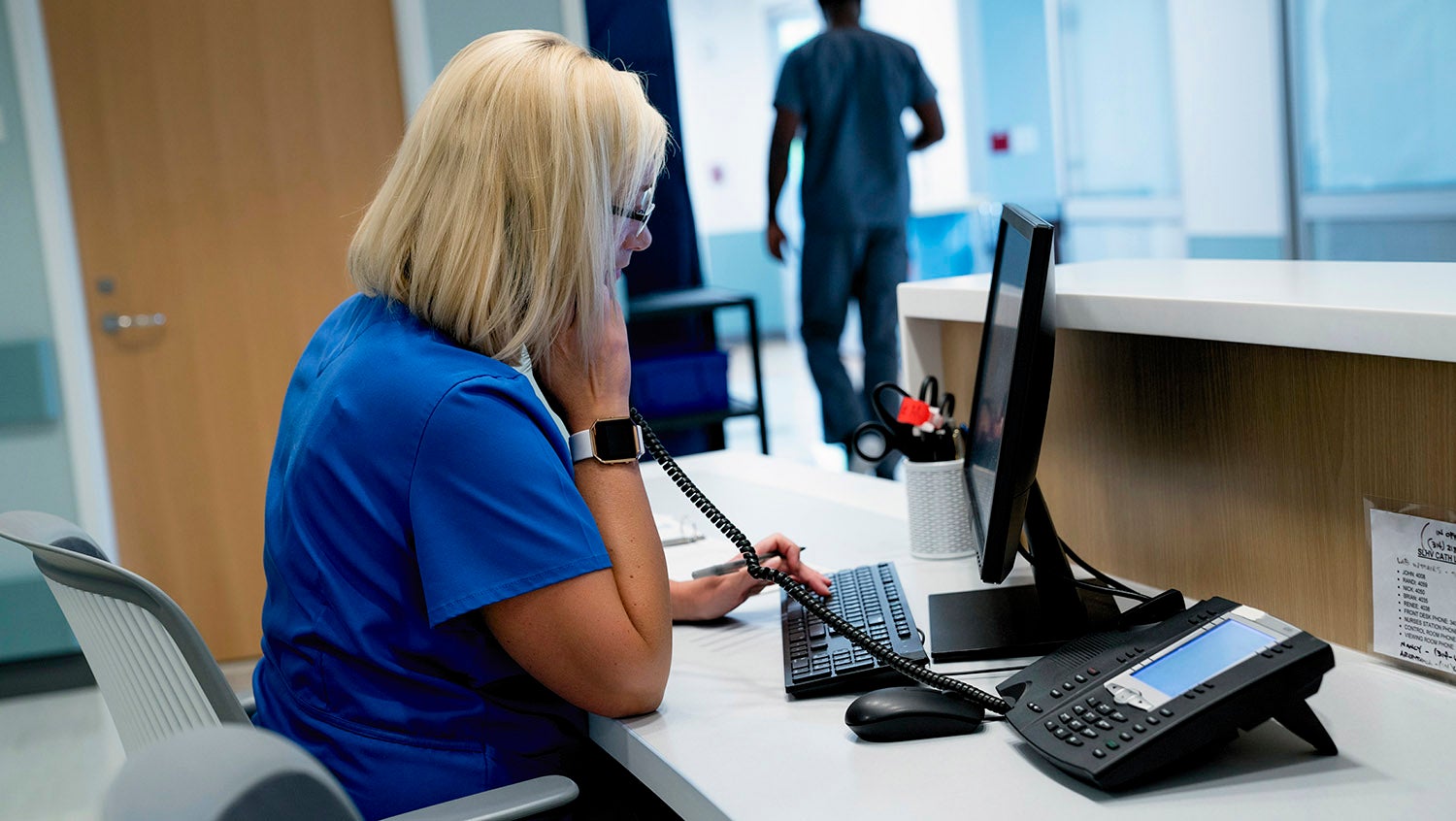Outreach and Follow-Up Key to Improving Depression Outcomes
January 27, 2020

Getty Images
South Boston CHC's formalized PHQ-9 rescreening process shows impressive impact on the CHC's rates of depression remission and response to treatment.
Annual healthcare spending on behavioral health already exceeds $200 billion in the U.S., and demand for behavioral health care is skyrocketing. Access hasn’t kept up with the growing need, and the trend shows few signs of improvement. By 2025, the demand for psychiatric care is projected to exceed the capacity of the psychiatric workforce by 25%.
The behavioral health treatment gap poses a significant challenge, for health systems as well as for patients. Behavioral health diagnoses — which often occur alongside other chronic or complex conditions — are associated with higher healthcare utilization, which is one of the reasons behavioral health has become a major focus of accountable care organizations (ACOs) and health systems working within value-based care models.
In 2018, Massachusetts’ state Medicaid program, MassHealth, began introducing new ACO quality metrics, several of which address screening and follow-up within primary care for depression. In the ACO that South Boston Community Health Center (SBCHC) belongs to, approximately 75% of patients with a behavioral health need have a diagnosis of depression specifically, revealing the high-impact potential on cost and outcomes of early, depression-focused behavioral health interventions.
High-touch behavioral health solutions are critical to serving patients. Due to the nature of depression and its effects on mood, even scheduling an appointment can feel like a high hurdle for patients. SBCHC found that their annual PHQ-9 screening process overlooked patients who didn’t schedule their own follow-up appointments, meaning many patients with the greatest need fell through the cracks. The health center also lacked a formal process to track the treatment progress of patients who screened positive for depression.
“The way our workflow was set up before was very dependent on patients coming in on their own and happening to receive a screener,” says Jacqueline Perry, MPH, the health center’s quality improvement analyst.
Motivated by the quality metrics change, SBCHC strengthened its behavioral health screening and follow-up for all patients at the health center. In April 2019, Perry and her team at SBCHC launched a quality improvement (QI) project that would help put more accountability with the health center to rescreen and keep patients engaged in behavioral health care, the new formalized rescreening process showing impressive impact on the CHC’s rates of depression remission and response to treatment.
Outreach and screening for better engagement
The QI team at SBCHC included providers, coordinators, and analysts with expertise in adult medicine primary care, behavioral health, and quality and performance improvement.
Step one in introducing their new QI project was using EHR data to identify patients who had previously screened positive for depression. The PHQ-9 screener, common in mental health settings across the country, contains nine statements — with phrases such as “feeling tired or having little energy” and “thoughts that you would be better off dead or of hurting yourself in some way” — and asks patients to rate how often they experience each. Participants receive a depression score based on their responses, ranging from minimal to severe.
The behavioral health coordinator contacted patients who’d had a positive screen within the past four to eight months to offer follow-up appointments with their primary care provider, at which patients would be rescreened to measure any improvements in their depression severity. During this outreach, however, the team discovered that some patients hadn’t moved forward with any depression care, a gap in engagement that needed closing. In response, the team became more proactive with their outreach, following up with patients within one to two months of a positive screen to offer help scheduling a behavioral health appointment — an effort to make sure patients weren’t just receiving screeners, but engaging with treatment in a timely way.
The outreach workflow also revealed that some patients did not want to schedule an in-person follow-up at all — in these cases, the behavioral health coordinator began conducting PHQ-9s over the phone.
“Outreach like this is important for all facets of behavioral health, but I think it is most beneficial with depression. Patients struggle with leaving the house or picking up the phone,” says Stephanie Davis, the CHC’s behavioral health coordinator. “Having someone to do the work and get to them is critical.”
Ultimately, SBCHC more than tripled its rate of patients receiving repeat screening. The median percentage of patients who experienced a PHQ-9 rescreen four to eight months after an initial positive rose from 12% to 38%.
The study also showed the influence of screening and outreach on patient remission and response. Remission rates increased from 1% to 6%. Depression response rates grew from 3% to 14%. SBCHC’s results, accomplished without additional resources, highlight the power of CHCs to improve behavioral health access and outcomes.
Defining success
Through routine team collaboration, including regular email reminders to primary care clinicians, SBCHC built internal awareness of the project and its goals. Biweekly meetings with the QI team prioritized the time and space to discuss progress and further areas of improvement. The iterative process allowed the team to make the workflow as airtight as possible by revising solutions as new challenges came to light.
For example, the health center also implemented a pre-visit planning step, in which the clinical quality analyst reviewed upcoming appointments on a weekly basis. The analyst identified any patient with an appointment that week who had previously screened positive. Regardless of whether the patient’s follow-up appointment was tied to behavioral health needs, the analyst placed an appointment note to administer a PHQ-9 in the patient’s record, helping to ensure that even those patients who were unreachable by outreach call were still being accounted for and having their previous positive screen addressed.
“Outreach like this is important for all facets of behavioral health, but I think it is most beneficial with depression”
– Stephanie Davis, Behavioral Health Coordinator
Perry attributes much of the intervention’s success to the diversity of the team, which included nurses, doctors, social workers, and other QI staff. The breadth of perspectives helped SBCHC foresee challenges and design an optimal workflow. Perry especially credits Davis’ unique behavioral health coordinator position for the project’s effectiveness — allowing the team to regularly and efficiently engage its patients in behavioral health treatment. Incorporating a designated, high-touch role such as this could allow other clinics and health centers to engage patients in necessary care, collect data that can improve how care is delivered, and positively impact patient outcomes.
“Now, we’re focused on making sure people get the appointments they already said they needed,” says Perry.


